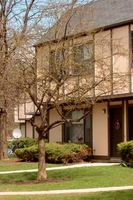Housing Preservation Strategy Paper
Housing Preservation Strategy Report

By the year 2040, the population of the northeastern Illinois region will increase by approximately 2.8 million. This will have a profound impact on the housing market. Where will these new people live? How will suppliers of housing respond to this increase in demand?
In the past, housing preservation strategies have focused either on preserving affordable housing subsidies or preserving historic structures. This report develops a new framework for housing preservation that addresses issues of affordability, community character, sustainability, and economic development.
CMAP's definition of housing preservation includes all actions that maximize the utility of the region's pre-existing housing stock to make a variety of housing options available to families at all income levels. It therefore embraces values inherent in both historic preservation and affordable housing preservation. Research shows that preserving and maintaining existing and older housing stock has benefits to the region's economy, community character, health and environment. This report will seek to describe current trends and conditions in the housing market and explore housing preservation strategies that make sense within this context.
A sample of findings:
- Northeastern Illinois saw the number of rental units in the region decrease by over 7% from 1990 to 2006; in that same time period, the number of owner-occupied units increased by over 28%.
- In northeastern Illinois, since 1990, household incomes have not kept pace with increases in housing values; the gulf between household income and housing values dramatically grew wider in the region between 2000 and 2005.
- While it is difficult to quantify their impacts, a variety of tools and strategies under the umbrella of housing preservation are currently being implemented around the region by county and municipal governments as well as non-profit organizations.
|
Links
|